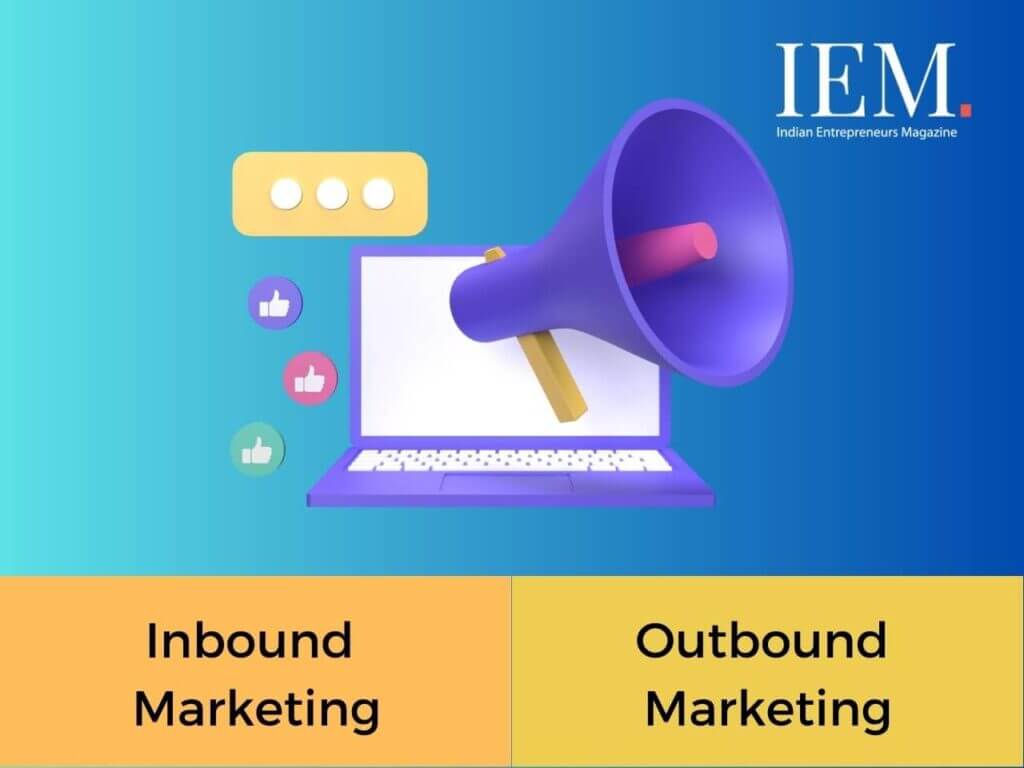Inbound and outbound marketing are two distinct marketing approaches that businesses can use to attract and engage with their target audience. In this guide, we will explain what inbound and outbound marketing are, their differences, and how businesses can use these marketing techniques to reach their target audience.
What is Inbound Marketing?
Inbound marketing is a marketing strategy that aims to attract potential customers by providing them with valuable and relevant content. This marketing approach is centred on creating quality content that solves the customer’s problem, educates them, or entertains them.
Inbound marketing typically involves creating and distributing content such as blog posts, social media posts, videos, podcasts, and webinars. The content is optimized for search engines and social media platforms to ensure it reaches the target audience. The goal of inbound marketing is to establish the business as a trusted authority and to build a relationship with potential customers.
What is Outbound Marketing?
Outbound marketing, on the other hand, is a marketing strategy that involves pushing a message or product to a wider audience. This marketing approach is centred on interrupting the potential customer’s experience to deliver a message. Outbound marketing tactics include television and radio advertisements, cold calling, direct mail, and email marketing.
The main difference between inbound and outbound marketing is the approach to reaching the target audience. Inbound marketing focuses on attracting potential customers by providing them with relevant content, while outbound marketing aims to push a message or product to a larger audience.
Which marketing technique is better for my business?
The choice between inbound and outbound marketing depends on the nature of your business and your marketing goals. Inbound marketing can be more effective for businesses that have a smaller marketing budget, as it relies more on content creation than paid advertising. It can also be more effective for businesses that have a niche audience, as it allows them to create content that is tailored to their specific audience. Outbound marketing, on the other hand, can be more effective for businesses that have a wider target audience and need to reach a larger number of people quickly.
How can I implement inbound and outbound marketing in my business?
To implement inbound marketing in your business, start by creating valuable content that is tailored to your target audience. This can be in the form of blog posts, social media posts, videos, and podcasts. Make sure your content is optimized for search engines so that potential customers can find it easily. You can also use email marketing to reach out to potential customers who have expressed interest in your business.
To implement outbound marketing in your business, start by identifying your target audience and the most effective way to reach them. This could be through direct mail, cold calling, or advertising. Make sure your message is clear and concise, and that it appeals to the needs and interests of your target audience. You can also use social media advertising to reach a wider audience and target specific demographics.
How can a business determine which marketing approach is best for them?
It depends on the business’s goals, target audience, and resources. Inbound marketing tends to be more effective for long-term brand awareness and lead generation, while outbound marketing can be more effective for short-term sales and promotions. Businesses should evaluate their unique situation and choose the approach that aligns best with their goals and audience.
Can inbound and outbound marketing be used together?
Absolutely! In fact, many businesses use both approaches in their overall marketing strategy. For example, a business might use inbound marketing to attract and nurture leads over time, while also using outbound marketing to promote a limited-time offer or special event. The key is to balance the two approaches and ensure they complement each other, rather than compete.
Are there any downsides to inbound or outbound marketing?
While both approaches have their benefits, they also have potential downsides. Inbound marketing can be slower to yield results and requires a significant investment of time and resources to create high-quality content and optimize for search engines. Outbound marketing can be more expensive and have a lower ROI if not targeted properly, and it can also come across as intrusive or pushy if not executed carefully. It’s important for businesses to weigh the pros and cons of each approach before diving in.
Conclusion
In conclusion, inbound and outbound marketing are two different strategies that can be used to reach potential customers. The key is to understand the nature of your business and your marketing goals, and to choose the most effective strategy for your needs. By implementing both inbound and outbound marketing, you can create a well-rounded marketing campaign that can help you reach your business goals.


3 thoughts on “Inbound vs Outbound Marketing: Difference and How to Use Them for Your Business”
Comments are closed.